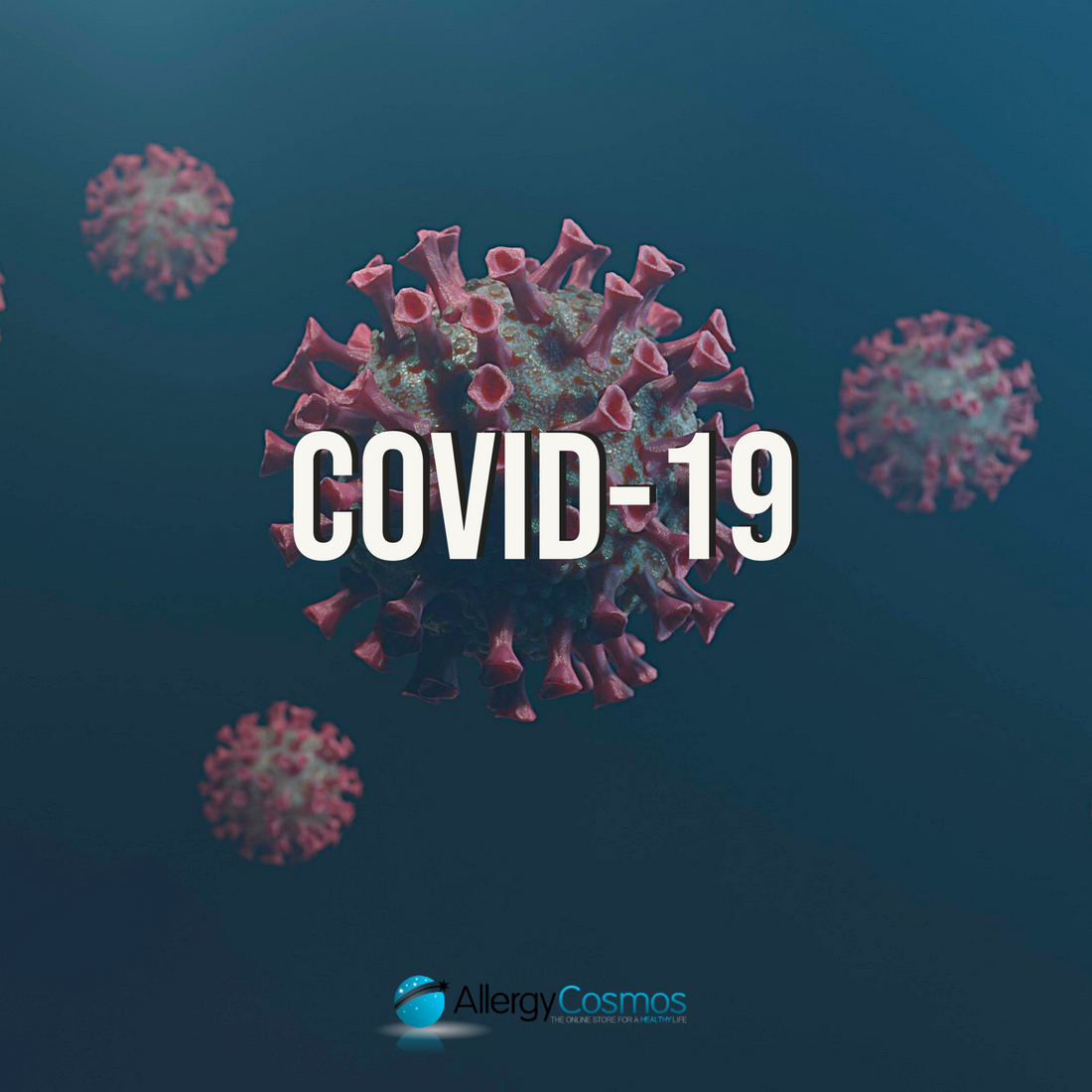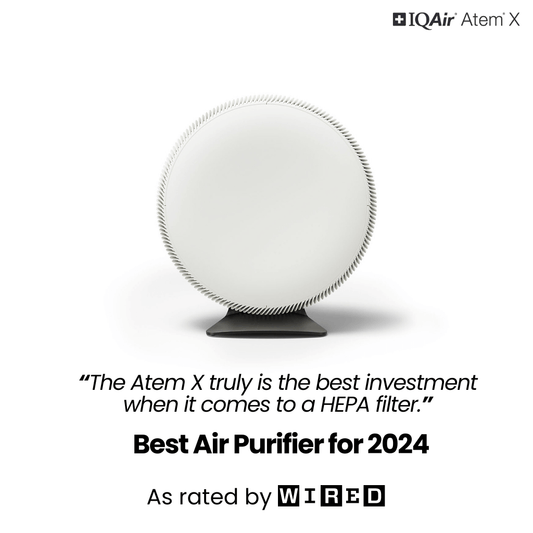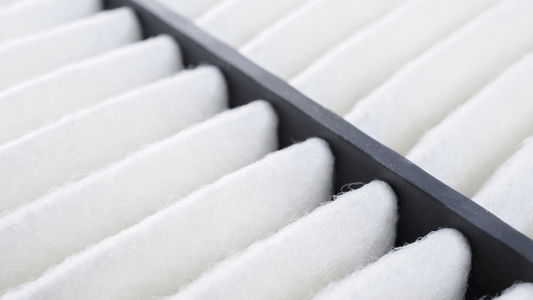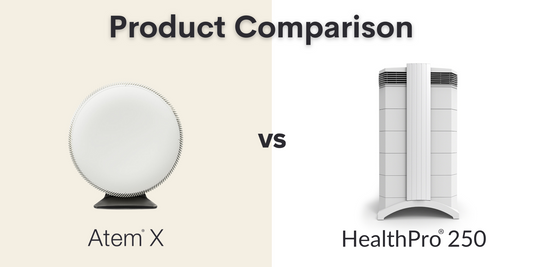Can Air Purifiers Help Stop the Spread of COVID-19?
As part of a holistic approach that includes following the World Health Organisation (WHO) and government guidelines, the use of certain types of air purifier will be able to help combat the spread of airborne COVID-19.
But with that being said, there is a great emphasis on certain types. The average domestic air purifier should not be considered for the removal of airborne coronavirus, especially those air purifiers which do not clearly state the air purifier’s filtration efficiency. The filtration efficiency of a coronavirus air purifier’s filter for particle removal at a certain size should be independently verified, before the manufacturer claims that their air purifier removes the coronavirus from the air. A large majority of air cleaners on the market use polypropylene as the base material for their filters. These filters are mostly not rigorously tested for prolonged high efficiency for filtering particles smaller than 0.3 microns.
As the coronavirus is approximately 0.08-0.12 microns, an air purifier needs to be able to offer high efficiency for the smallest particles and also guarantee that the efficiency will remain consistently high. A true HEPA filter (i.e. not a polypropylene filter) will provide the most reliable form of filtration in this instance as its efficiency does not decrease, but rather increases, over time. [1]
How Does Coronavirus Spread?
Despite the initial uncertainty among experts across the globe, there now seems to be an ever-growing consensus that the primary source of transmission of the coronavirus is through the airborne route. In April 2021, over a year since the first recorded cases of COVID-19 in the UK, the British Medical Journal (BMJ) released an editorial that highlighted the need for increased efforts in protecting the air quality in places where COVID transmission was far more likely- i.e., schools, workplaces and healthcare environments. [2]
In such environments, where there's a higher concentration of people, it is likely that a greater amount of the coronavirus SARS-COV-2, as part of an aerosol, will be present in the ambient air. As well as viruses like the coronavirus, aerosols contain a collection of several different particles that have the ability to remain suspended in the air for a number of hours, can be inhaled, and thus can transmit the virus. Even if an infected individual leaves the room, the aerosols they have exhaled can be inhaled by others.
Understanding the role aerosols have in the spread of COVID-19 has naturally led to calls for public health guidelines to provide a greater emphasis on improving indoor air quality. Until now, government public health guidelines had centred their focus almost entirely on the need to wash hands on a more regular basis and social distancing.
Although surface transmission, known as fomites, is still a possibility for the spread of COVID-19, it is understood to now be far less likely than via aerosols [3].

Does Coronavirus Affect Asthma?
As coronavirus is a respiratory infection that attacks the cells in the lungs, people suffering with asthma are thought to be more likely to experience severe COVID symptoms.
Symptoms can include:
- Sore throat
- Difficulty breathing/shortness of breath
- Coughing
- Fever
- Fatigue
- Loss of taste and/or smell
The process of COVID-19 infection starts once the virus reaches an individual’s respiratory tract, and from there, it attaches itself to a healthy cell, known as ACE2, before multiplying to infect other cells. In most cases, airways become inflamed making it difficult for an infected person to breathe. For someone already suffering with asthma symptoms, further inflammation and subsequent damage of their airways is likely to increase overall symptoms.
It is therefore recommended that people suffering with asthma follow the suggested steps to avoid COVID-19 infection. This includes social distancing where possible, wearing the appropriate face masks, washing hands regularly, and making sure rooms are well-ventilated and/or have an effective air purifier to reduce potential viral contamination in the ambient air.
While it is important to note that suffering with asthma is not thought to increase the likelihood of an coronavirus infection as such, the lasting effects of an infection, known as ‘long COVID’ can impact how people suffering with asthma might judge and manage their asthma symptoms. Long COVID symptoms include an ongoing cough and breathlessness [4] which are also typical asthma symptoms. Effective asthma treatment is crucial in preventing asthma attacks so contact your GP if you’re unsure of what could be causing your symptoms.
Air Purifiers and COVID-19
As we have already mentioned, searching for an effective coronavirus air purifier can be difficult at the best of times as the markets for air purifiers is not regulated in the UK. So, what key elements do you need to look out for when deciding on a coronavirus air purifier to create a safer home or a COVID secure workplace?
Independent verification
Independent verification is perhaps the most important factor in determining an air purifier’s suitability. If conducted by a leading reputable laboratory, the filter would have gone through stringent and rigorous testing to confirm that its filters are capable of being used in sensitive medical environments. Standardised testing, such as the EN 1822 test, test a filter’s efficiency in removing particulate pollution. However, this will not be a test for the unit as a whole, but just the filter media in it. For an air purifier as such to be tested, laboratories often use a virus identical in size to the coronavirus - such as the H1N1 virus - to monitor how much of the virus the air purifier removes from the ambient air and how long it takes to do it. Below is an example of a test to assess an air purifier’s efficacy in removing coronavirus. The report, conducted by Airmid in June 2020, assessed the IQAir HealthPro 250 air purifier’s ability to remove the virus, showing that it is capable of removing airborne coronavirus by 99.99% in a 28.5m3 room in less than 10 minutes.

True HEPA Filtration
A coronavirus air purifier that uses true HEPA filtration should have a leakage-free design and will provide the most effective and reliable method in removing the smallest microorganisms. The reason for this is that HEPA filters do not lose efficiency over time, no matter how long they have been used or the number of pollutants that it has captured. However, even if you’re sure the air purifier uses true HEPA filtration, it is still important to enquire about the minimum efficiency rating for the smallest microorganisms, like the coronavirus.
Maximum Airflow Rate
Having an efficient filtration system in your home or workplace is obviously vital in combating the airborne spread of coronavirus - especially in environments that are poorly ventilated. However, even the best and most efficient system will not achieve the necessary results if it does not achieve an appropriate amount of clean air changes per hour in the room that it is being used in. In most work or residential environments, and for a high-performance HEPA air purifier, it is recommended to achieve about 2-3 clean air changes per hour. Achieving this will depend on two important factors: the size of the room and the air purifier’s airflow rate. Most manufacturer’s display their air purifier’s airflow rates in cubic metres per hour (m3/h), which will allow you to calculate the amount of clean air changes per hour the unit will achieve.
Ref:
1) https://en.wikipedia.org/wiki/HEPA
2) https://www.bmj.com/content/373/bmj
.n1030 (BMJ 2021;373:n1030)
3) https://www.blf.org.uk/support-for-you/long-covid/what-is-long-covid/common-symptoms#lcsymp




